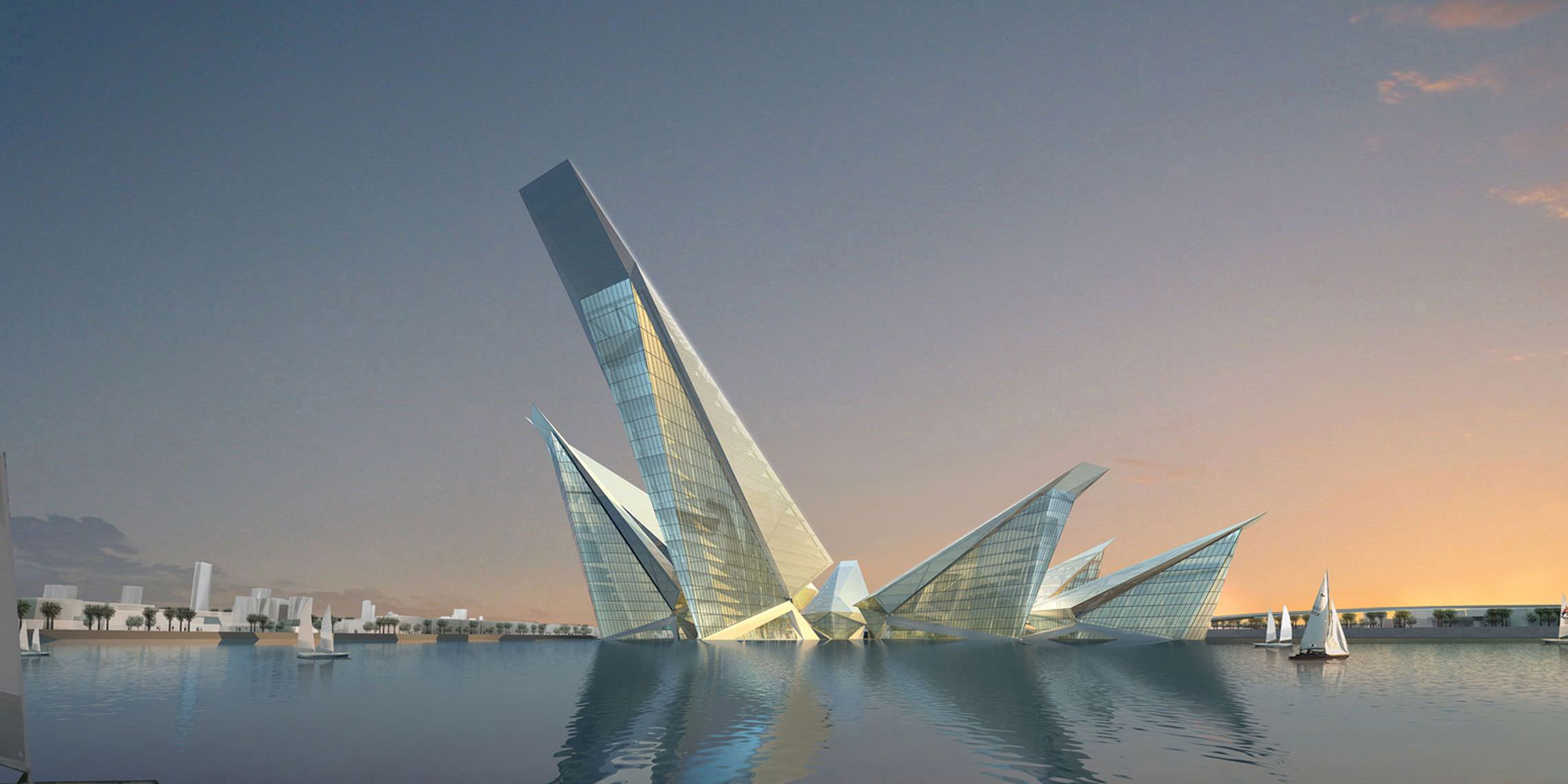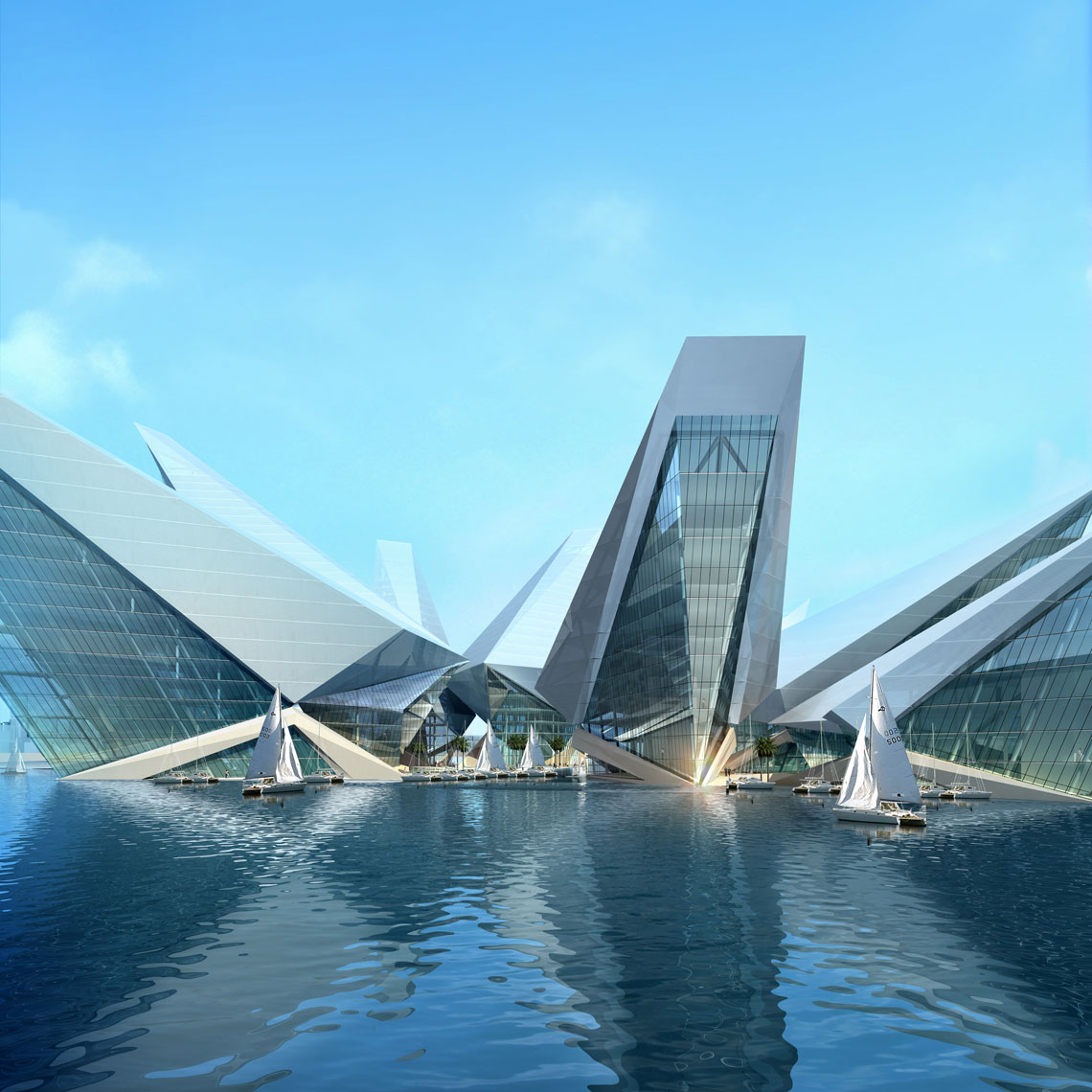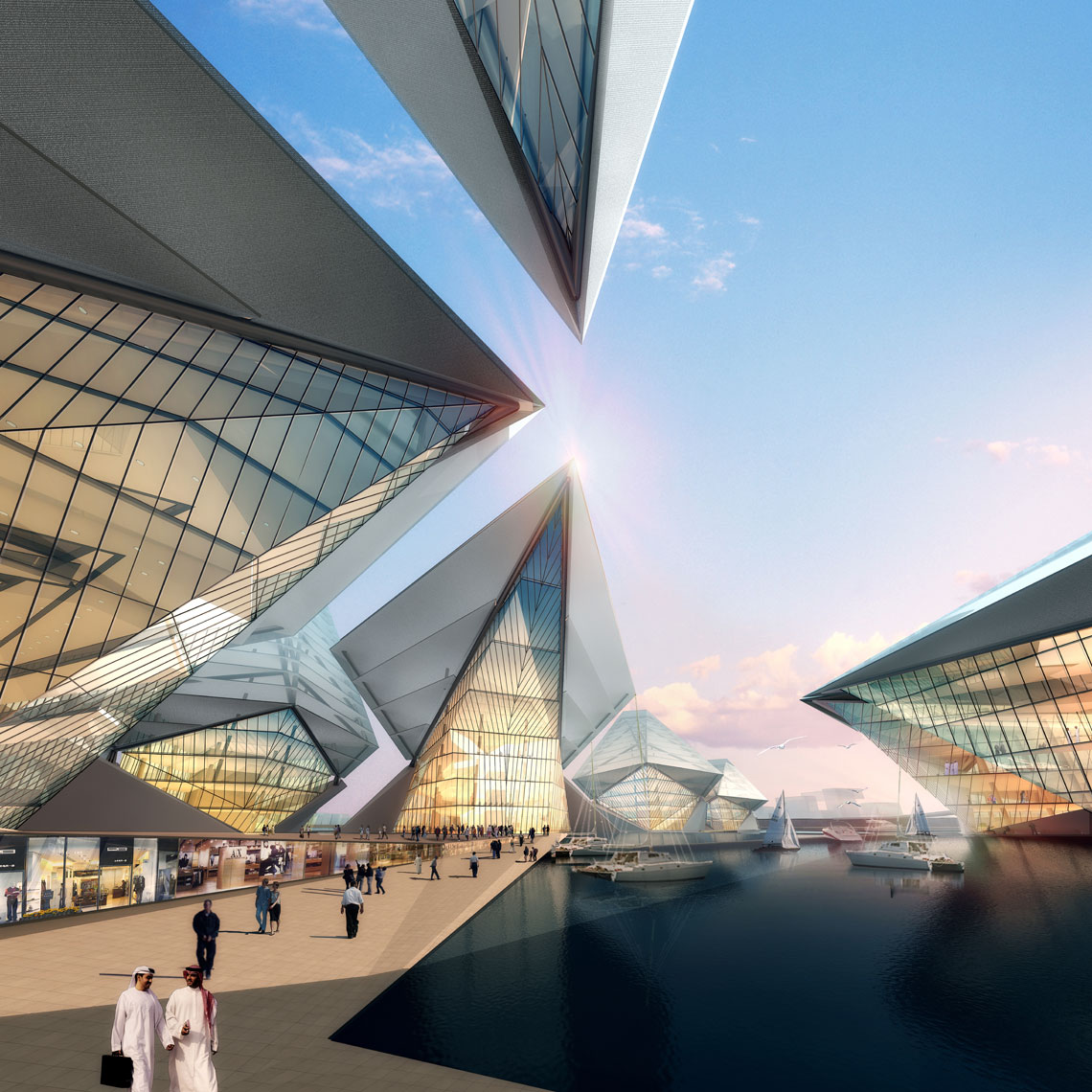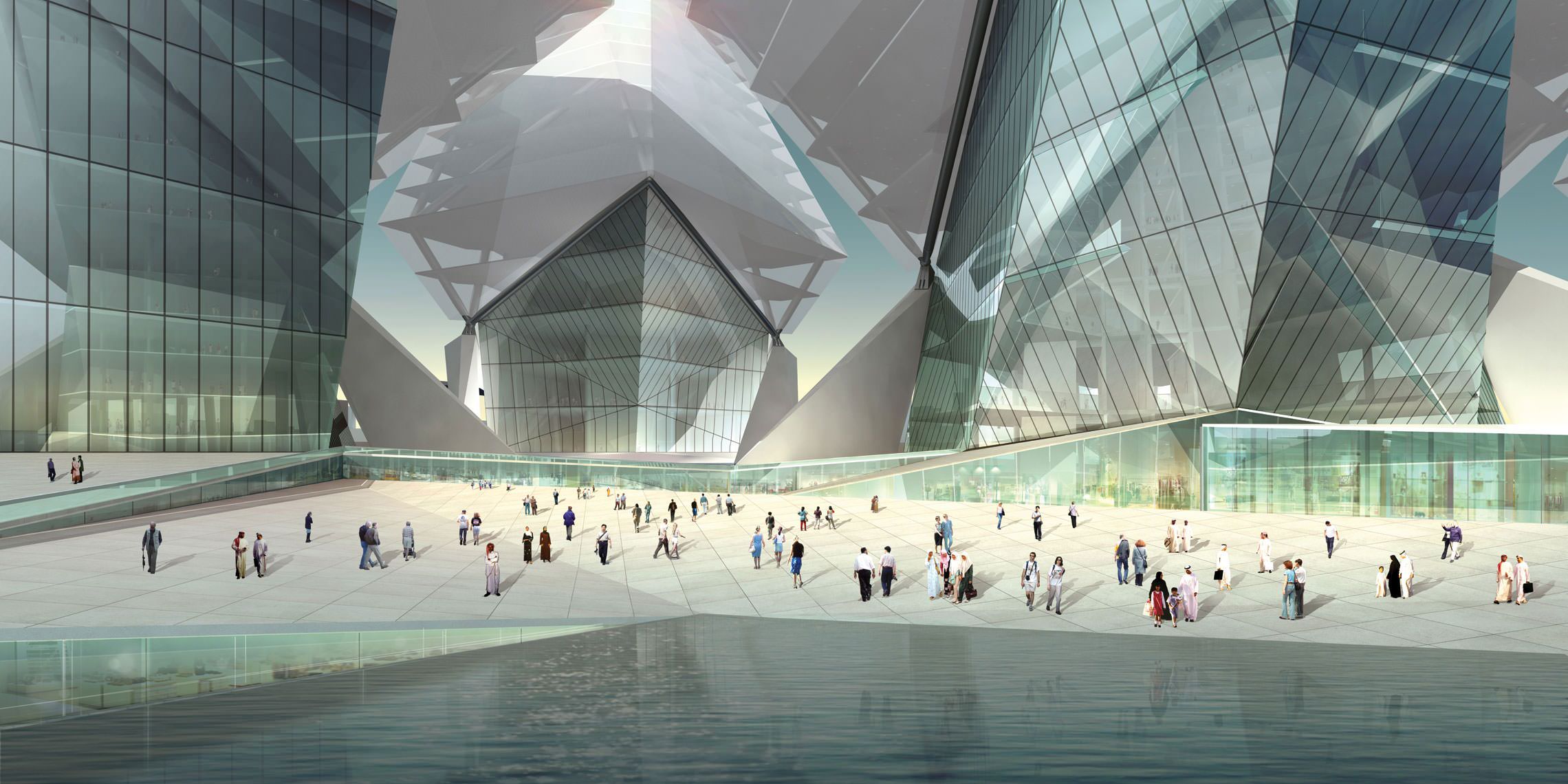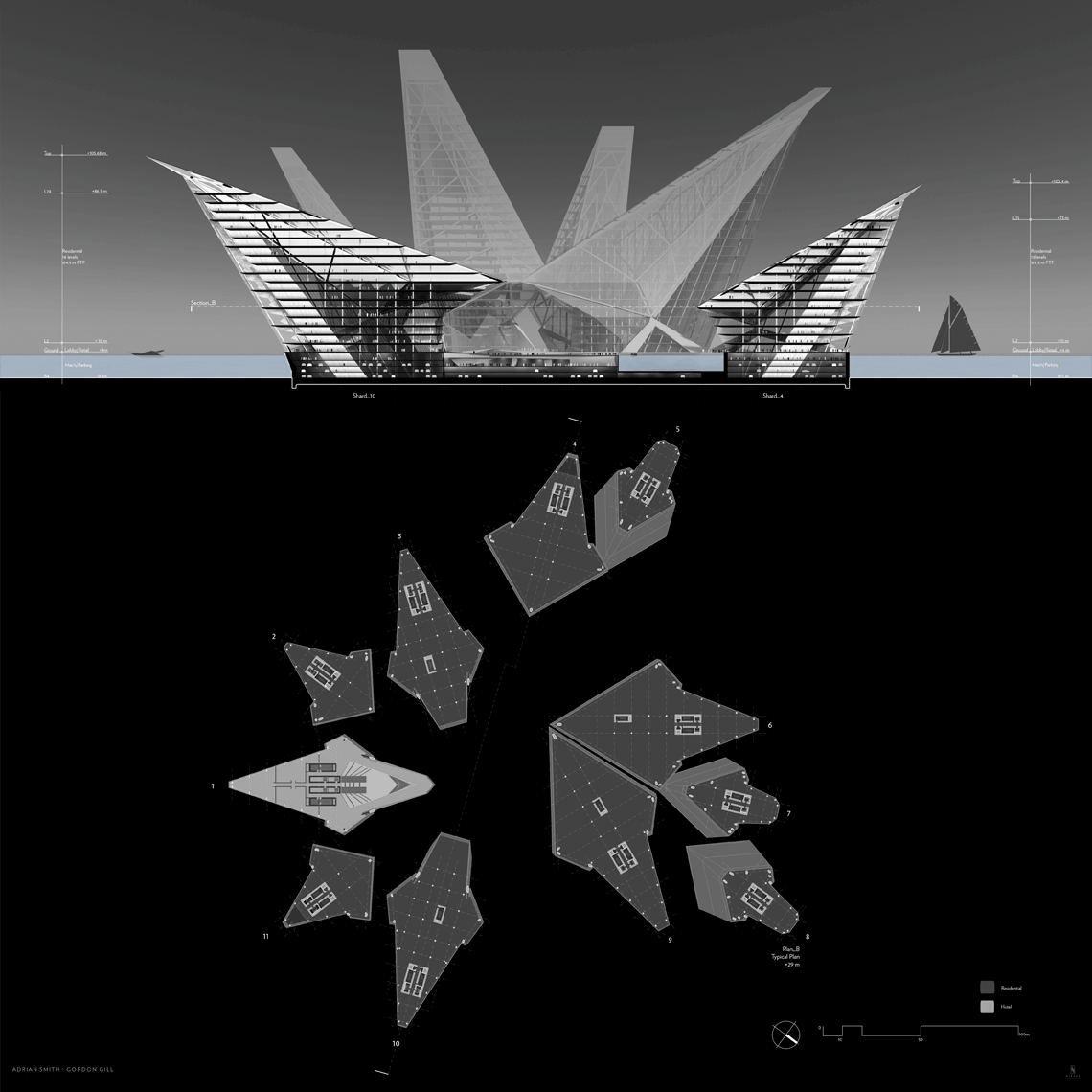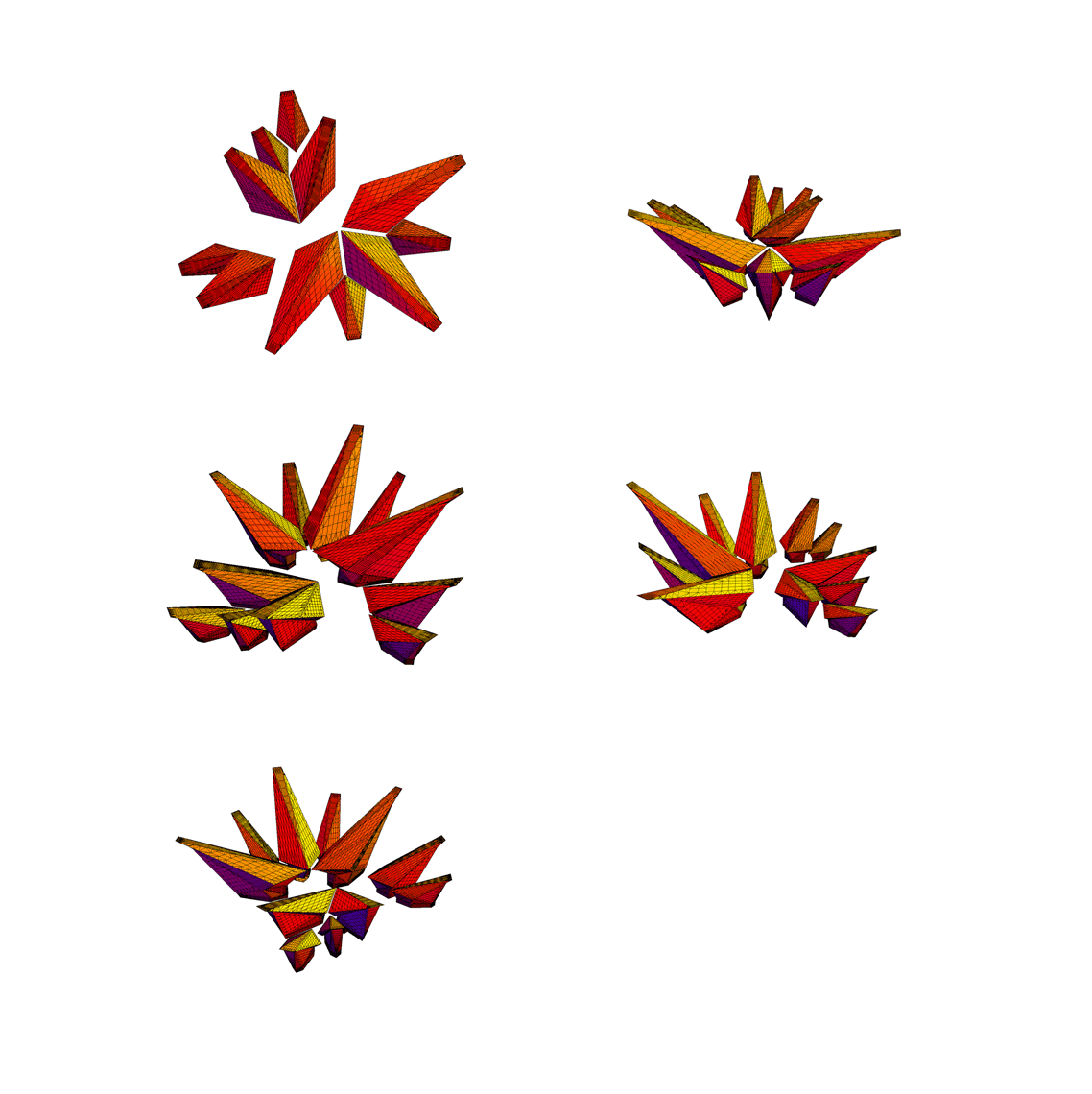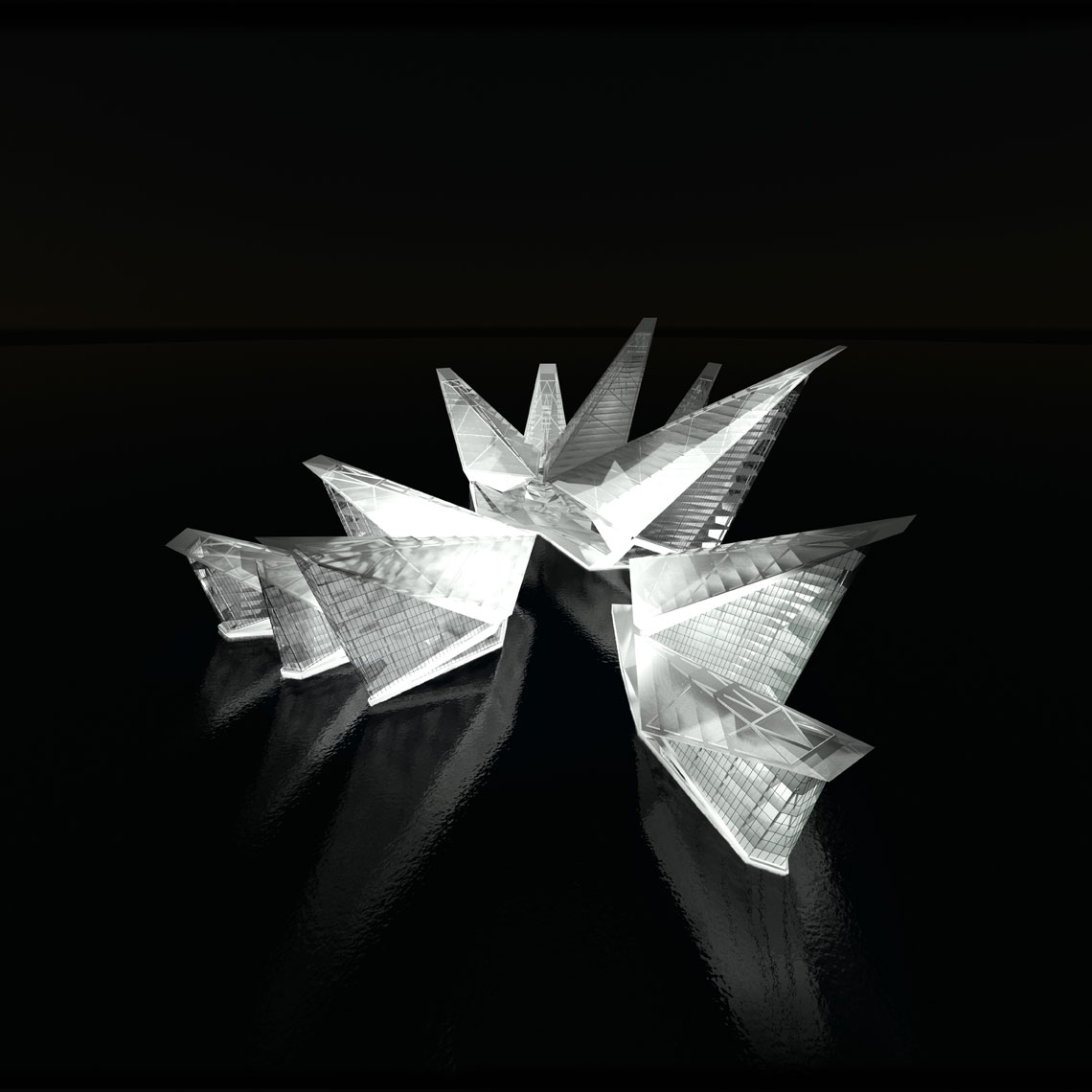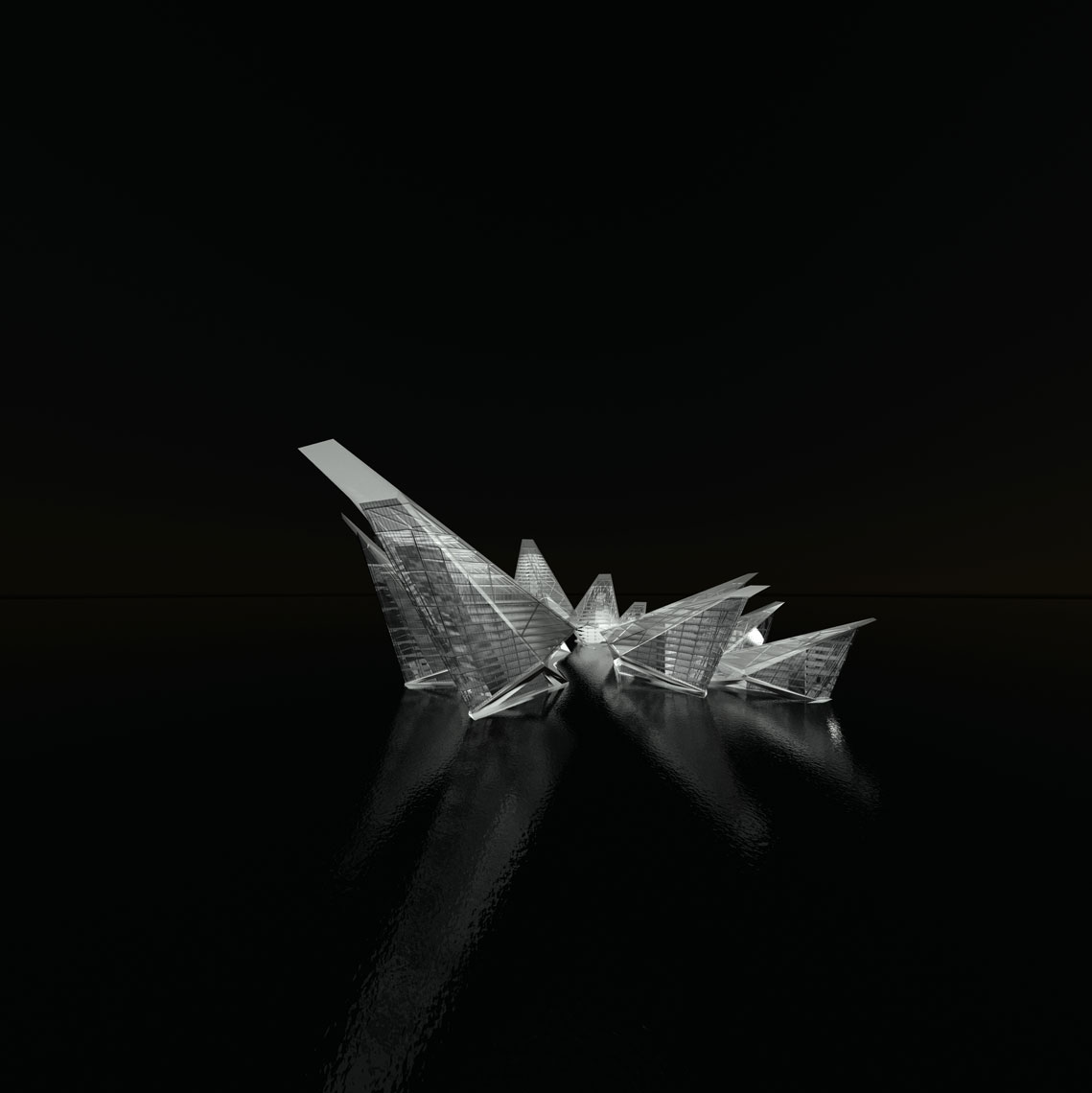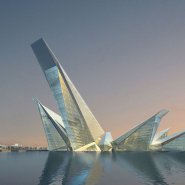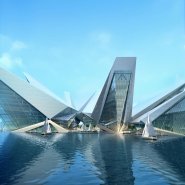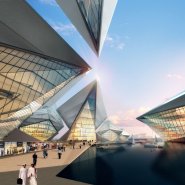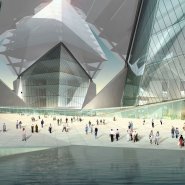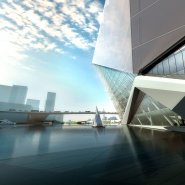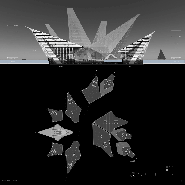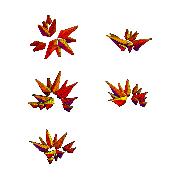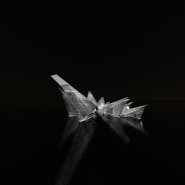If a tectonic shift in an undersea geological formation sent giant crystals thrusting up through the water’s surface, it might look something like Crystal Center, a dramatic arts center prototype positioned in a lake or harbor.
Eleven jutting, crystalline structures of varying size—with cantilevers of up to 230 feet over the water—are joined at a base largely concealed beneath the surface, creating the illusion of the structures as independent.
If the building is located in a tidal basin, some of the shards or crystals will be accessible to each other via foot traffic across the base at low tide. At high tide, the base (which also contains a parking podium accessed from the mainland by a tunnel) will be submerged. At the rear of the circle of structures, a series of plazas—one large, two smaller—is enclosed, creating a grand civic space complete with water features.
Inside the structures, the cantilevers create stunning interior spaces from which occupants will enjoy extraordinary views while experiencing a sense of being suspended above the water. The cantilevered roofs also allow the building to shade itself in a hot climate, which in turn allows for greater transparency in the glass curtain walls beneath.
This low-maintenance passive sustainability strategy is echoed by mesh shading screens on the building envelope that reduce solar heat gain and protect a series of rear-facing terraces and balconies.
The structure of this complex building is surprisingly rational, using standard members for a building of its size. Many of the floor slabs are hung from a series of exterior steel trusses at the rear of the crystals. The trusses, which provide lateral stability and define the structure’s tapering profile, are balanced and propped by uniquely inclined concrete cores.
